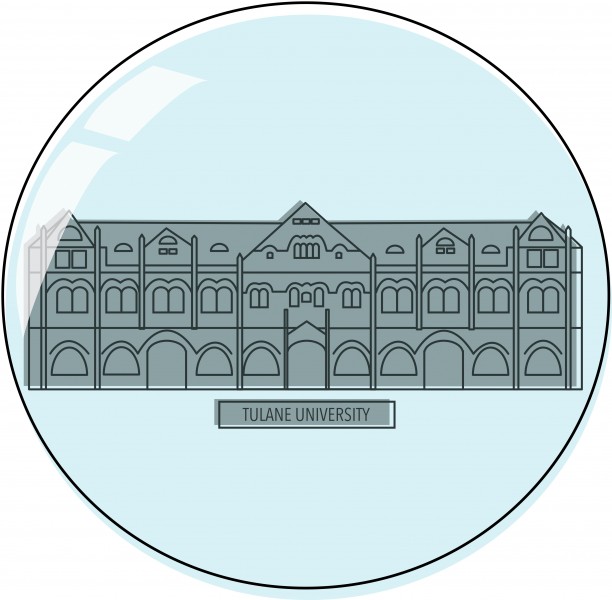“Tulane Bubble” perpetuates physical segregation between Tulane, NOLA
The Tulane community takes pride in connecting with the city around it, notably ranking in The Princeton Review as the No. 1 school for community service. Despite Tulane’s emphasis on service and the engagement of its administration, however, many Tulanians have observed an isolation from the broader New Orleans community, a barrier known colloquially on campus as the “Tulane Bubble.”
Tulane has an open campus, meaning the campus is not gated and people can leave or enter without needing to go through security. According to Joseph Bishop, chief of police for the Tulane University Police Department, this openness allows for a close-knit and beneficial relationship between Tulane and the surrounding area.
“We are an open and welcoming community for anyone with lawful interest,” Bishop said. “We invest police resources off campus to create a better environment for all the community, regardless of their affiliation with Tulane.”
While Tulane is classified as an open campus, there are movement restrictions across campus boundaries. One such restriction is the fence along Tulane’s eastern border, which includes gates that only Splashcard-carrying Tulane affiliates may pass through.
“Tulane University is a private campus, meaning only those with legitimate business on campus may be on our property,” Bishop said. “The fence that runs behind Sharp and Monroe serves many purposes. The main purpose is for security. It allows the university to funnel those who are entering the university into places we control.”
Despite efforts to maintain a meaningful relationship between Tulane and the surrounding area, many Tulane students believe the “Tulane Bubble” is still palpable.
“The Tulane Bubble is definitely a tangible aspect of student life. There are obvious demarcations associated with where is … normal to go,” Cade Herman, a sophomore from Lake Charles, Louisiana, said. “There is an obvious disconnect between the influx of out-of-state students and the locals.”
Tulane is located in a culturally-isolated region distinct from the rest of New Orleans, known in some academic circles as “the White Teapot.” In his article “Gentrification and its Discontents,“ Richard Campanella, a New Orleans geographer, Tulane professor and author, coined the term “White Teapot,” referencing the region’s geographic shape and demographic makeup. In addition to being racially and culturally distinct from surrounding areas, the “Teapot” is also composed primarily of transplants, or people not native to New Orleans, who play a significant role in the gentrification of the city.
“Gentrification in New Orleans is spatially regularized and predictable,” Campanella wrote. “Native tenants fare the worst in the process, often finding themselves unable to afford the rising rent and facing eviction.”
Because of this gentrification, many neighborhoods surrounding Tulane have become culturally isolated from the neighborhoods in which native New Orleanians tend to live. As a result, access to distant neighborhoods is key to bursting the “Bubble.”
“Having access to a car significantly changes people’s experiences with the ‘Tulane Bubble,'” Ashley Ferragamo, a junior from Peabody, Massachusetts, said. “When a student lives off campus but does not have a car, they aren’t really better off than the students living on campus. I don’t have a car in New Orleans, so I still feel like I am in the ‘Tulane Bubble.'”
New Orleans native and sophomore Aarshvi Patel noted the stark contrast between her experience growing up in the greater New Orleans area and the lifestyle of Uptown’s residents.
“When I came [to Tulane] I felt such a difference. I could see a divide in the personalities, the lifestyles, the culture, and I immediately felt like I needed to conform,” Patel said. “It would be great if students made an effort to see the authenticity of what New Orleans means and not just the touristy aspects – not just the streetcars, not just the food.”
Your donation will support the student journalists of Tulane University. Your contribution will allow us to purchase equipment and cover our annual website hosting costs.

















Leave a Comment